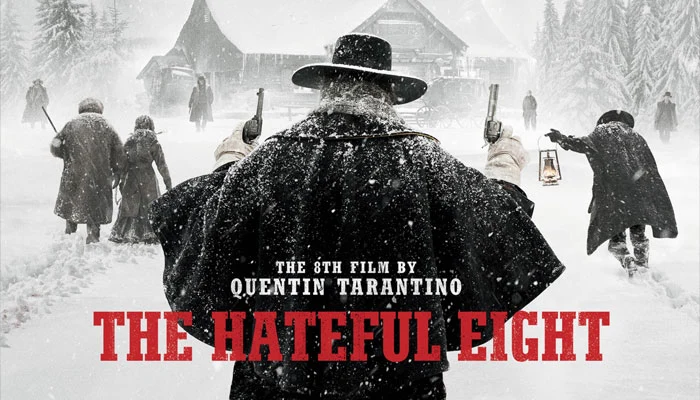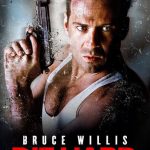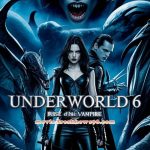The Hateful Eight (2015)

Quentin Tarantino’s “The Hateful Eight,” released in 2015, is a gripping and audacious Western that delves into themes of betrayal, racism, and the moral ambiguity of humanity. Set against the bleak backdrop of a post-Civil War Wyoming, the film captures the essence of Tarantino’s signature style—sharp dialogue, complex characters, and a tense narrative structure. The project garnered significant attention following a leak of the script, which almost led Tarantino to abandon it entirely. However, the final product stands as a testament to his resilience and creativity, offering audiences a masterclass in filmmaking.
The story unfolds in a remote cabin during a harsh blizzard, where eight strangers find themselves trapped together. The characters include bounty hunter John Ruth (Kurt Russell), who is escorting his prisoner Daisy Domergue (Jennifer Jason Leigh) to justice, and several other dubious figures: Major Marquis Warren (Samuel L. Jackson), a former Union soldier turned bounty hunter; Chris Mannix (Walton Goggins), a self-proclaimed sheriff; and a few others whose allegiances and motives remain shrouded in mystery. As tensions rise and the storm rages outside, the film examines the dynamics of trust and suspicion among the characters, setting the stage for a claustrophobic and deadly showdown.
One of the film’s most striking features is Tarantino’s masterful dialogue. The conversations are not only entertaining but also reveal the intricate layers of each character’s personality and backstory. The banter, infused with dark humor and tension, serves to build an atmosphere of impending doom, where alliances shift and loyalties are tested. Tarantino’s knack for crafting memorable and quotable lines is on full display, making the characters both relatable and repulsive, often in equal measure.
Kurt Russell delivers a commanding performance as John Ruth, a bounty hunter who believes in the law but is not above using intimidation to achieve his goals. His interactions with Daisy Domergue are particularly engaging; the dynamic between captor and captive is fraught with tension and uncertainty. Jennifer Jason Leigh’s portrayal of Daisy is equally noteworthy. She embodies a complex character—vulnerable yet cunning, and her performance earned her an Academy Award nomination. Daisy’s presence disrupts the traditional notions of femininity and power, adding depth to the narrative.
Samuel L. Jackson shines as Major Marquis Warren, bringing a magnetic energy to the film. His character’s backstory is explored through a powerful monologue that not only reveals his past but also underscores the film’s commentary on race and justice. Jackson’s performance is a reminder of the historical wounds that still resonate, and he navigates the complexities of his character with skill and nuance.
The cinematography by Robert Richardson is another highlight of “The Hateful Eight.” Shot in Ultra Panavision 70, the film’s visuals are breathtaking, capturing the stark beauty of the snowy landscape while simultaneously creating a claustrophobic atmosphere within the cabin. The long takes and wide shots immerse the audience in the environment, enhancing the tension as the characters confront each other. The film’s score, composed by Ennio Morricone, is haunting and evocative, further enriching the film’s emotional depth and sense of foreboding.

As the story progresses, the tension escalates, leading to a series of shocking revelations and brutal confrontations. The film’s structure, akin to a stage play, emphasizes the confined setting and the characters’ psychological warfare. The slow build-up of tension culminates in a violent climax that is both shocking and cathartic, showcasing Tarantino’s penchant for combining graphic violence with darkly comedic moments.

“The Hateful Eight” is also a commentary on the nature of justice and morality. As the characters reveal their true motivations, the film forces the audience to grapple with difficult questions about right and wrong. The boundaries between hero and villain blur, reflecting the complexity of human nature. In a world where survival often trumps morality, Tarantino challenges viewers to reconsider their perceptions of justice and the lengths to which individuals will go to achieve it.

In conclusion, “The Hateful Eight” is a bold and provocative entry into Tarantino’s oeuvre, showcasing his unique storytelling style and cinematic vision. With its rich character development, sharp dialogue, and breathtaking visuals, the film immerses viewers in a tense and morally ambiguous world. The performances by Kurt Russell, Jennifer Jason Leigh, and Samuel L. Jackson are standout contributions to a compelling narrative that examines themes of betrayal, trust, and the darkness that resides within us all. As the credits roll, audiences are left to ponder the intricate web of relationships and the harsh realities of a world where survival is the ultimate goal, making “The Hateful Eight” a striking reflection on the human condition and a testament to Tarantino’s storytelling prowess.











